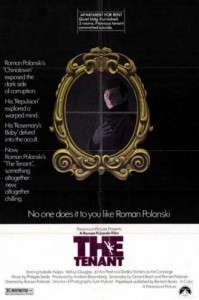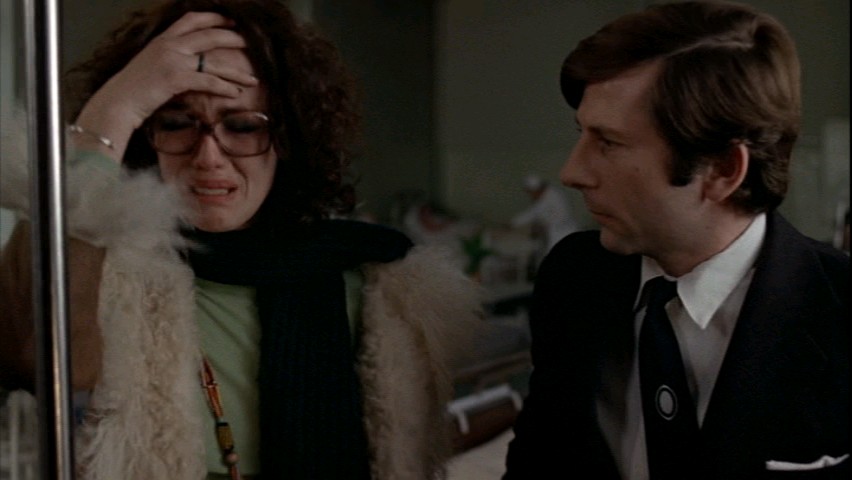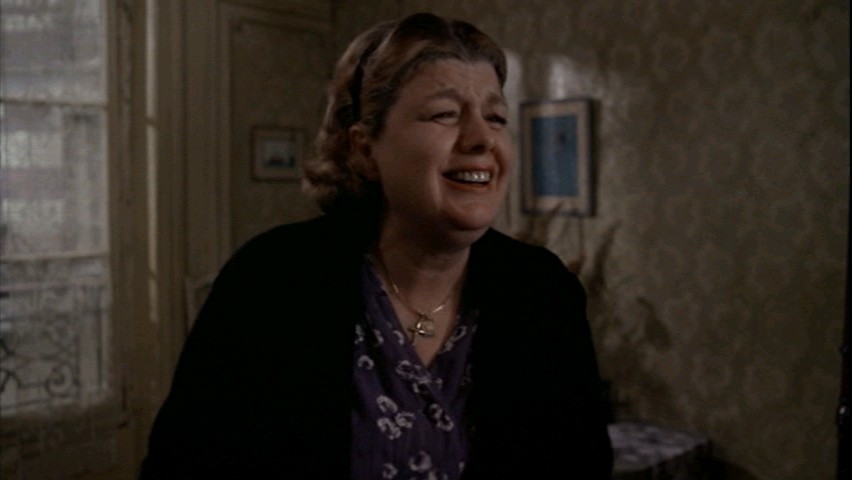“These days, relationships with neighbors can get very complicated.”
|

Synopsis:
In Paris, a nebbishy Polish man (Roman Polanski) rents the apartment of a woman who has recently committed suicide. Soon he becomes convinced that his neighbors are trying to turn him into the dead woman.
|
|
Genres, Themes, Actors, and Directors:
- Black Comedy
- Downward Spiral
- Living Nightmare
- Melvyn Douglas Films
- Mental Illness
- Psychological Horror
- Roman Polanski Films
- Shelley Winters Films
Response to Peary’s Review:
As Peary notes, this “disturbing psychological horror film” (directed by and starring Roman Polanski) is much more interesting during its first half, as we watch “Polanski’s paranoia regarding [his] neighbors” intensifying, and witness his profound sense of persecution as an ethnic “outsider” in France. Unfortunately, the second half of the film turns into an “unsettling and ridiculous” exploration of Polanski’s descent into madness; as Peary notes, the “transition is too quick” once Polanski suddenly starts dressing like a woman, and we lose interest because — now that Polanski’s character is clearly mentally unstable — we start to question the veracity of the entire story. Indeed, fans on IMDb have engaged in countless debates over what’s “real” or not in the story — and though this kind of narrative ambiguity sometimes works in a film’s favor, here I found it more frustrating than enjoyable. As always, Polanski’s production values are excellent, and he elicits wonderfully quirky performances from his cast of supporting actors; it’s too bad their voices are horribly dubbed.
Redeeming Qualities and Moments:
- Isabelle Adjani as Stella, a friend of the deceased tenant

- Shelley Winters in a bit role as The Concierge

- Sven Nykvist’s cinematography

Must See?
Yes, simply for its cult status.
Categories
Links:
|
One thought on “Tenant, The (1976)”
A must – perhaps not for the casual film watcher, but definitely for ffs.
Bleak and oblique (and certainly a companion piece to ‘Rosemary’s Baby’), it’s an intriguing film that holds more for me each time I see it – at least once a year. Unlike Peary, I don’t find the second half “ridiculous”, nor do I think the “transition is too quick” (in fact, it seems to be happening slowly from the start); the film seems all of a piece – even if that piece is open to interpretation. Is it a comment on a world of obvious self-interest vs. that which is more contained? Is it an existential Twilight Zone episode? (Halfway-through, Polanski asks, “At what precise moment does an individual stop being who he thinks he is?”) Is it an Ionesco-influenced take on conformity? (“It’s simply a question of solidarity,” says Jo Van Fleet in a terrific cameo.)
It appears to be all that and more: What’s with the Egyptology (talked about at a party; symbols on the wall in the john)? Why does Polanski slap a child in a short scene? – are we to think the child represents (to him) the future of a stupid world?
The film raises many questions for the viewer to mull over. For that reason, it has a Rubik’s Cube quality that I continue to find satisfying.
As noted, Nykvist’s photography is a standout – esp. the sad figures who stare back at Polanski in his apartment; some of the most haunting imagery in cinema.